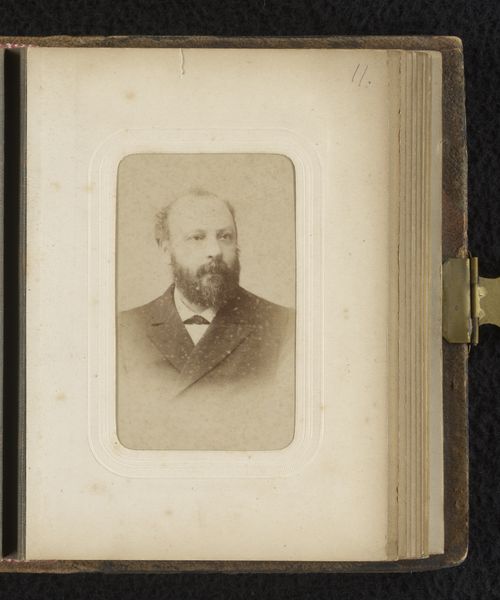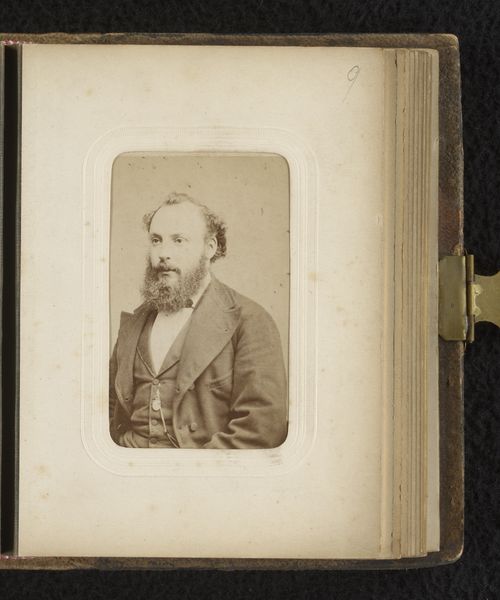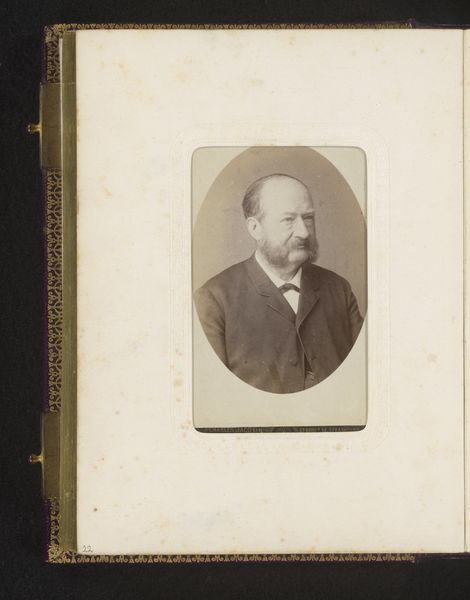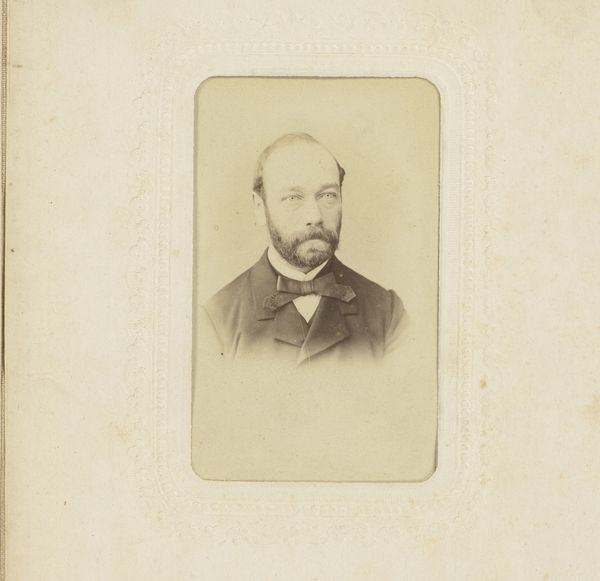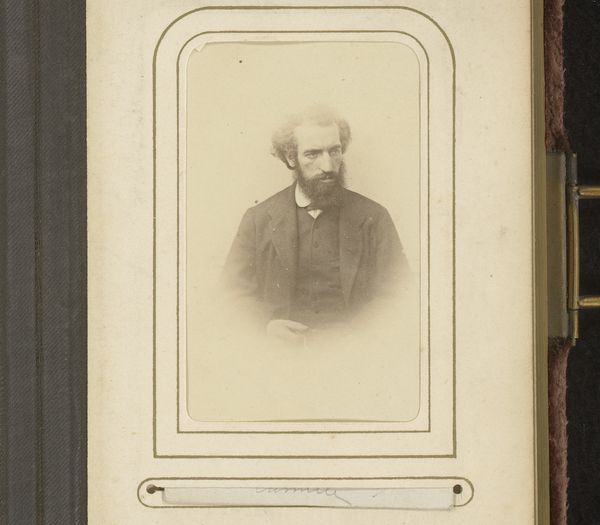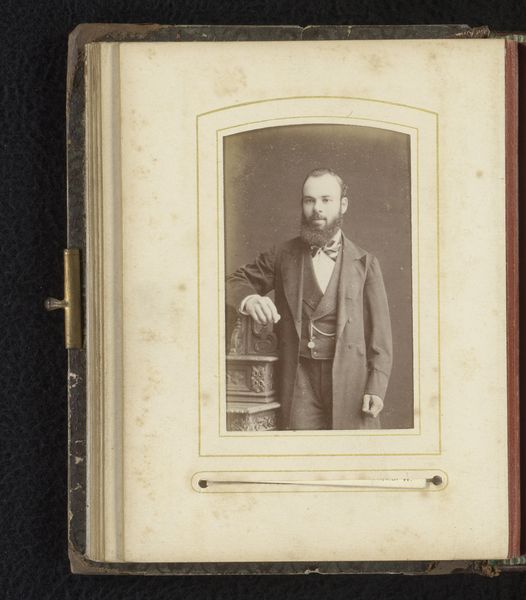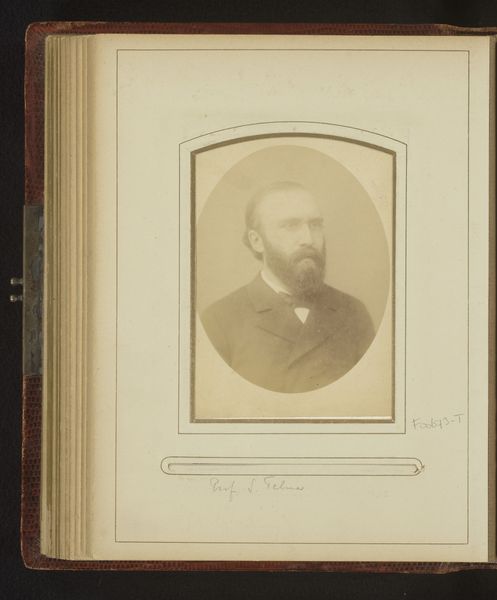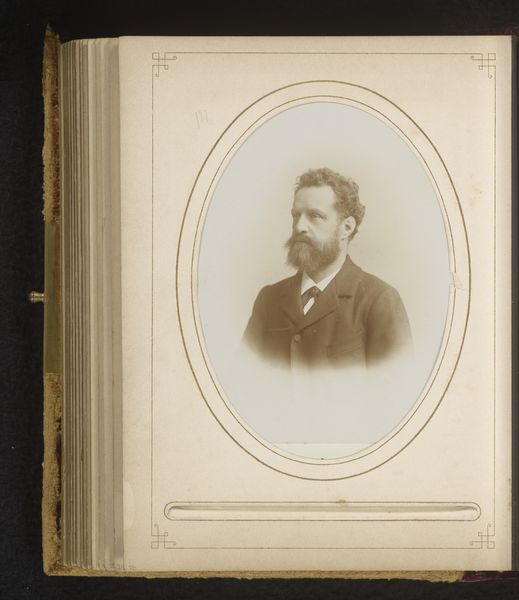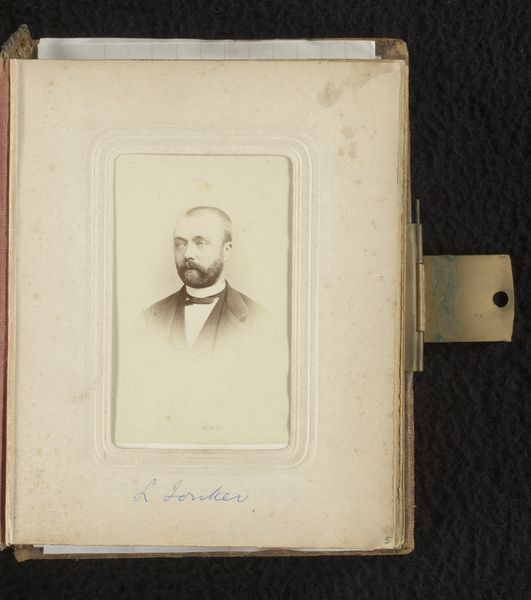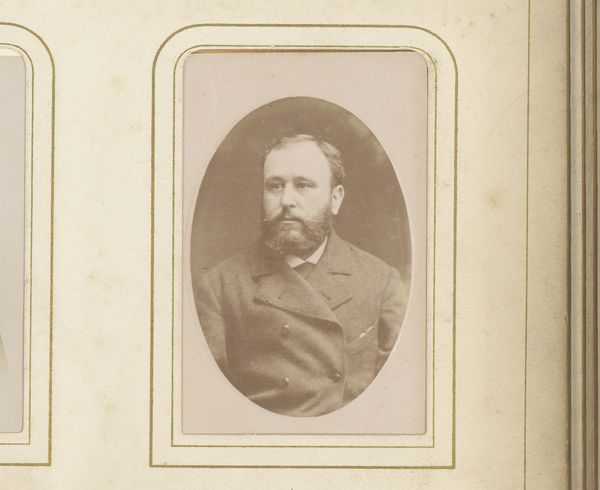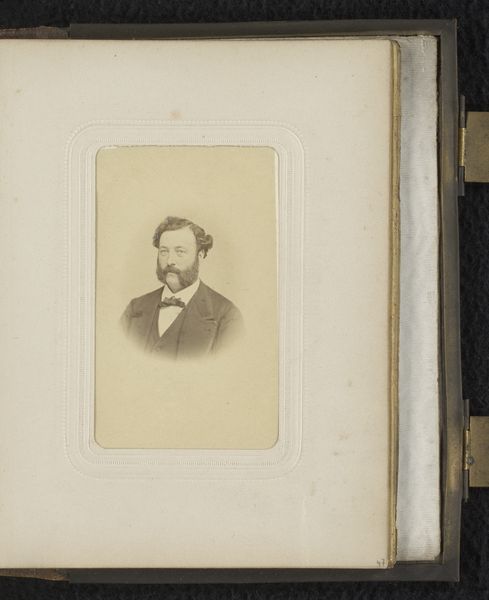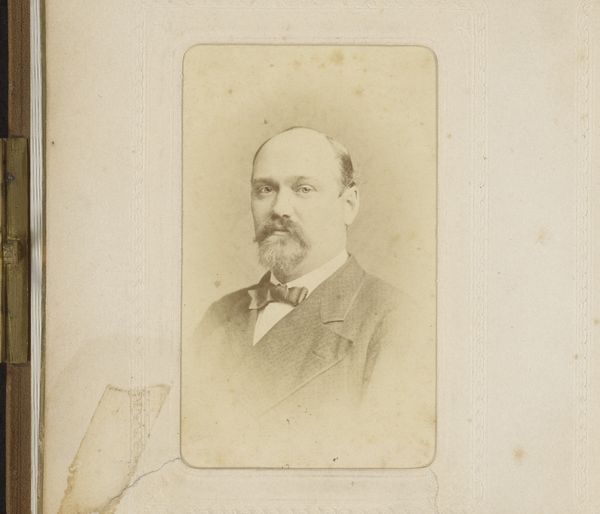
Dimensions: height 84 mm, width 51 mm
Copyright: Rijks Museum: Open Domain
Curator: Looking at this open photo album, I find myself drawn to "Portret van Petrus Hermanus Bon." The gelatin-silver print, dating somewhere between 1872 and 1917, offers such an intimate glimpse. Editor: There's a warmth about this piece. Not in colour, obviously, but in the mood. He seems kind, contemplative. Do you get that too? The soft focus almost feels… dreamy. Curator: Dreamy is interesting. Photography in this era aimed to capture reality, to archive society’s faces, in contrast to paintings that idealized their subjects. There is a deliberate artistic intent that you would expect, yet you're drawn to its seeming imperfection. Editor: Exactly! It's like catching someone in a moment of quiet thought, which makes it relatable. It isn't staged in that cold, formal way you see in many historical portraits. I think that quality evokes empathy from modern audiences. I am just looking for what this portrait feels. Curator: And I wonder how the institutional framework impacted it. Gelatin-silver prints allowed for mass production and distribution. Images, once limited to the wealthy who could afford painted portraits, became available to a wider segment of society, impacting perceptions of value and prestige. Editor: That mass production makes me consider our access here; in the age of Instagram where images and portraits are captured on every corner, the intimacy feels strange. There is this almost performative nostalgia, but here its really personal! It shows someone's everyday experience... and maybe he never thought we'd be looking at his portrait. Curator: Indeed. Perhaps the charm of the piece lies precisely there - a collision of our world and theirs that dissolves the pretense. This photo captures a moment in time—of a man, of the era’s ambitions and assumptions, and in its own way, it captures the possibilities of visual social archives that photography allowed. Editor: I think it is how we feel something in an album that is beautiful and powerful, almost time travel if you permit. Curator: Nicely said! It is, ultimately, about that intersection, between documented past and our lived present.
Comments
No comments
Be the first to comment and join the conversation on the ultimate creative platform.
